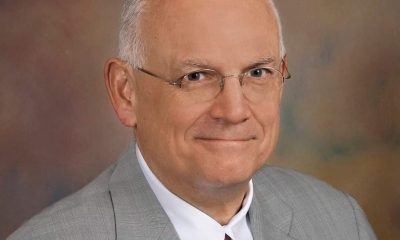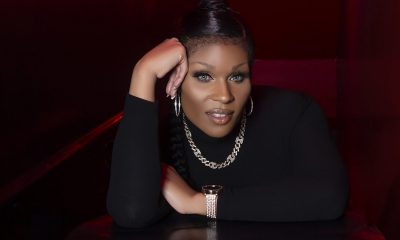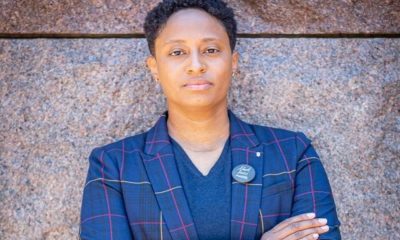Television
‘Halston’ promises sumptuous look at rise and fall of a fashion icon
Gay designer defined women’s style for an era
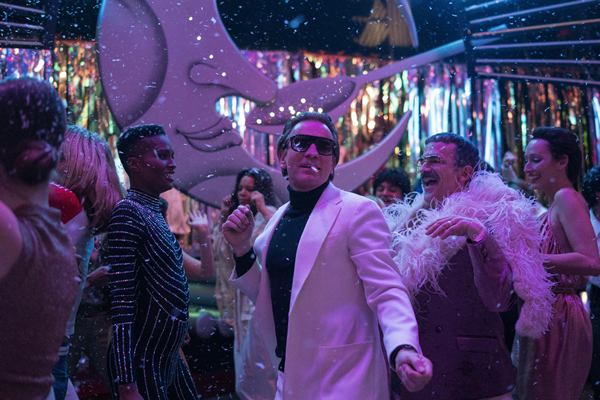
When we hear the name “Halston,” our first thought is not likely to be of his status as an LGBTQ hero – except in the sense that he designed clothes for best friend Liza Minnelli.
Yet Roy Halston Frowick, who became the first “celebrity designer” in a career that defined women’s fashion for an era and paved the way for the age of influencers by making his identity synonymous with his brand, can be clearly seen today as a queer pioneer. A gay midwestern boy whose grandmother gave him a love of sewing, he rose to fame after designing the famed pillbox hat worn by Jacqueline Kennedy at her husband’s 1961 inauguration, and spent the next decade building a reputation fueled by the celebrity of a growing list of famous clients while honing a style that combined functionality, elegance and comfort in a way that seemed perfectly in tune with the rising women’s liberation movement.
The empowering ease and “effortless” sex appeal of his designs came to epitomize ‘70s style, a signature feature of the Disco Era that has cast its not-so-subtle influence on every generation since, and the fashion house he started became legendary in an industry that was still tightly controlled (like every other industry) by straight men. It was an accomplishment that might have gone unheralded by most at the time, but which historical perspective reveals as a groundbreaking moment in the LGBTQ community’s rise from the shadows.
Unfortunately, Halston’s fall from glory – marked by his loss of control over the company he started, through a series of corporate acquisitions that might fairly be described as nefarious – and subsequent 1990 death from AIDS-associated Kaposi’s sarcoma still largely overshadows his reputation (if not the fashions he created) in the popular imagination. But thanks to the arrival of the new Netflix limited series “Halston,” which drops on May 14, that is about to change.
Created and directed by Emmy-winner Daniel Minahan, the five-episode biographical portrait stars Ewan McGregor as Halston, and follows the legendary designer as he leverages his single, invented name into a worldwide fashion empire synonymous with luxury, sex, status, and fame, literally defining the ‘70s and ‘80s era New York in which he lives, before a hostile take-over forces him to battle for control of his most precious asset – the name Halston itself. McGregor is joined by a cast that includes Bill Pullman (as Halston’s business associate David Mahoney), Krysta Rodriguez (as Minnelli), Rebecca Dayan (as Elsa Peretti, another close Halston friend), Gian Franco Rodriguez (as Halston’s sometime lover, Victor Hugo), David Pittu (as Halston illustrator and creative director Joe Eula), Rory Culkin (as Joel Schumacher), Kelly Bishop, Sullivan Jones, and Vera Farmiga – and as even a quick look at the publicity shots of each of them in full costume for their roles is enough to verify that the series has gone out of its way to meticulously recreate the look and feel of Halston’s glamorous world.
The series found its way to the screen thanks to Minahan’s interest in “Simply Halston,” a bio penned by Vanity Fair writer Stephen Gaines. Working with producer Christine Vachon, he began work on adapting the book as a feature-length film, but the scope of the story made honing it into a two-hour-ish running time a daunting task, and the idea was shelved. The option on the book then passed through a series of other hands, but when the rights became available again, Vachon approached Minahan with the idea of revisiting the project as a mini-series, and, as Minagan says, “it just clicked.” It wasn’t long until Ryan Murphy reached out (through Alexis Martin Woodall, president of his production company) to express his interest, and things “started moving very quickly.”
“Working with Ryan is a unique experience,” says Minahan, who previously worked with the powerhouse producer on “The Assassination of Gianni Versace.” “He draws the best out of people, and he demands excellence from everyone who works with him. He has an uncanny sense for story, and I’ve been fascinated for years by the tone he’s able to strike in his work and the depth of emotion that he’s able to express.
He also says Murphy had “a unique relationship” with the material that helped inform the end product. “[He] grew up in Indiana […] then he worked building an empire as a gay man in a corporate world as Halston did, so he was really generous with his experience. A lot of that made it into our scripts. We were very lucky to have him be involved.”
As for McGregor, Minahan says that although he had considered a whole list of actors for the starring role, the “one and only meeting” he had was with the popular and prolific Scots actor. Though McGregor identifies as straight, he has long been an LGBTQ ally, with a history of sensitive and insightful performances in gay roles (most notably the fictionalized amalgam of Iggy Pop and Lou Reed he portrayed in Todd Haynes’ glam-era fantasy, “Velvet Goldmine”), and according to Minahan, his work as Halston is nothing short of immersive.
“Watching Ewan transform into Halston was fascinating,” he says. “When he arrived in New York, he asked for a room where he could work undisturbed with some props — True cigarettes, which are the same brand Halston smoked, cigarette holders, Flair pens like Halston used, scissors, fabric, a black turtleneck, a tape measure, and some yellow lined notepads.” The actor also worked with costume designer Jeriana San Juan, acquiring a detailed familiarity with the technical minutiae involved with designing and assembling clothes – even going so far, according to San Juan, as studying her eye movements while she worked “so he could better track his eyeline when he’s designing as Halston in the show.”
Of course, it’s one thing to capture the physical reality of a true-life character, and quite another to infuse that character with an inner life that honors their experience. From the fabulous ferocity he displays in the show’s trailer, the versatile star of movies as wide-ranging as “Trainspotting,” “Moulin Rouge,” and the middle “Star Wars” trilogy looks to have delivered a career-topping performance – and if there’s any doubt whether he can convey the authenticity required to illuminate the drive that took Halston to the pinnacle of the fashion world when it was still run by a conservative and closed-minded “boys’ club,” his delivery of the line, “I’ve been an outsider my entire life, till one day I just stopped giving a flying fuck,” should put it to rest.
With what could become one of the season’s most acclaimed performances at the center, and its sumptuous depiction of an iconic era through San Juan’s costumes and the world-building of production designer Mark Ricker, “Halston” looks to be a benchmark for “prestige” TV in 2021.
In any case, thanks to the enduring fascination its subject and his legacy still hold for millions of fans and admirers, queer and straight alike, it’s sure to be at the top of a lot of “must watch” lists when it debuts on May 14.
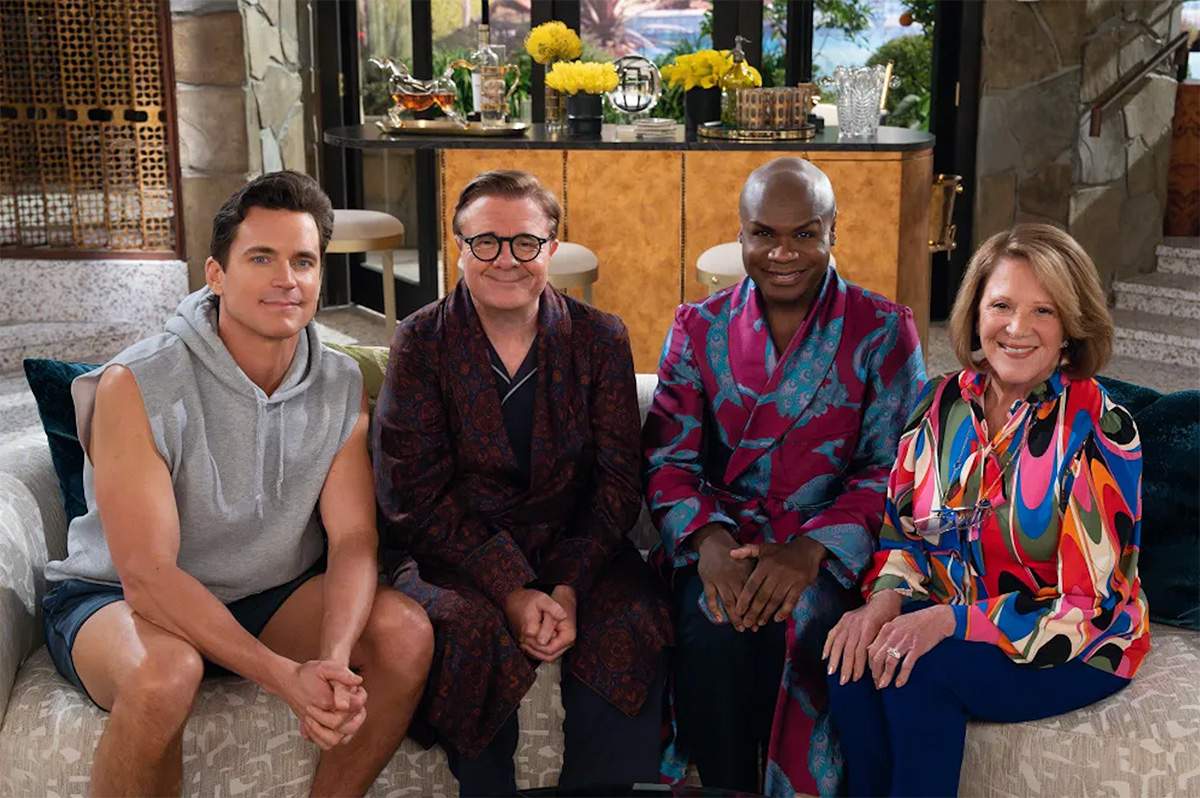
There’s long been a desire for a gay version of “The Golden Girls.”
GenX (and younger) fans who have loved that show’s iconic quartet of aging female “frenemies” have been clamoring for it since the actual “Golden Girls” was still on the air – so by the time the creators of “Mid-Century Modern” came up with the concept for a show about three gay friends “of a certain age” (and one cantankerous mother) living together in Palm Springs, it was hardly an original idea. Yet even if they weren’t the first to fantasize about a show featuring the gay male equivalents of Dorothy, Blanche, Rose, and Sophia, it hardly matters. They were the ones that actually made it happen.
That’s due in large part to who they are – or at least, what they’ve done before. The two men who hatched the plot (Max Mutchnick and David Kohan) were also responsible for “Will & Grace.” After they teamed up for a brainstorming session with queer TV powerhouse Ryan Murphy – who eagerly joined forces with them as the show’s executive producer – there was enough viability behind it to bring the long-gestated dream to fruition at last.
The “at last” came this week, when all 10 episodes of the show’s debut season dropped on Hulu, and it’s undeniable that there was not only a dream behind it, but also a considerable amount of talent – most obviously in its casting. Headlining (as “lingerie mogul” Bunny Schneiderman) is longtime stage/screen/TV star Nathan Lane, a multi-award winner who is a legend for his “Bird Cage” performance alone, with eternally hunky Matt Bomer adding a whole different flavor of star power as ditsy-but-sweet-hearted (and blithely promiscuous) flight attendant Jerry. The trio of friends is rounded out by former fashion columnist Arthur, played with imperious aplomb by Nathan Lee Graham, a lesser-known but equally well-rounded veteran performer whose resume includes roles in “Zoolander” and “Priscilla, Queen of the Desert,” and as a guest appearance on “Absolutely Fabulous.” Finally, sitcom royalty (and Tony-winner) Linda Lavin – who passed away in December, after filming had completed on the show’s inaugural season – is on hand to steal scenes as Sybil, Bunny’s pull-no-punches mother, who owns the house they all live in and makes sure to assert her matriarchal dominance at every opportunity.
In the pilot episode, titled “Bye, George,” Bunny, Jerry, and Arthur reunite to mourn the death of an old companion, with whom the trio of friends once formed a quartet. With each of them facing the uncertainty of a new life after changes in the old one have left them to cope on their own, Bunny decides to invite his two remaining buddies to move to Palm Springs and live with he and his mother, in a spectacular mid-century modern (hence the name) house that would probably make Frank Sinatra jealous. The arrangement, however, becomes precarious even before it officially begins, when Bunny connects with a much-younger hook-up and becomes smitten – forcing his two would-be roommates into a scheme to bring him back to his senses before he rescinds their invitation and offers it to his new “boyfriend” instead. It’s classic sitcom material, of course, with lots of crossed wires and jumped conclusions to fuel the wackiness – though in this case, at least, the show stops short of the zany hijinks one might expect from Lucy and Ethel (or even Rose or Blanche) before wrapping things up in a friendship-affirming bow. We can’t fault it for that; there’s a premise to be launched here, after all.
Besides, there’s plenty of other comfortable old-school sitcom fun to be had throughout: a sparring match between Arthur and Sybil, whose love-hate dynamic quickly sets the stage for an ongoing battle of sharp wits and sharper tongues; the air-headed naivete of Jerry, with Bomer both leaning into and undercutting the cliché of the pretty-but-dumb aging “twunk”; and Bunny’s sincere but impulsive starry-eyed sentimentality, which is frequently undercut by his “Dorothy-esque” natural instinct (and Lane’s natural talent) for bitchy queendom.
Yet while there are clear choices to mirror the iconic personality traits of the original “Golden Girls” crew in “Mid-Century Modern,” the new series seems less regimented in defining each of its characters quite so succinctly, opting instead for a sort of “blend” in which the familiar personas of the former show’s leading ladies are spread a little more evenly between the four of them together. The result is a show that is obviously a new variation on an established theme, but one in which echoes of the original can be detected in each of its disparate elements rather than confined within the plainly-delineated parameters from which they have been inherited. To put it more plainly, it’s a show that acknowledges and embraces the material which inspired it, but goes beyond mere imitation to carve a space of its own. Neither a remake nor a reboot, it’s more like an offspring, a separate entity unto itself despite the DNA it shares with its progenitor.
Which is, of course, the only way a show like this can have any real chance of success; to attempt a direct copy of the series that inspired it would spark inevitable (and well-deserved) criticisms of laziness, along with the myriad quibbles which would undoubtedly arise from displeased “Golden Girls” fans; yet to diverge too radically from the established format would eliminate the very reason for its existence. Its seasoned creators were savvy enough to know that a gimmick only goes so far, and they build a show that leaves room for growth beyond its origin as a nostalgic homage into a series with the potential to succeed in its own right. And with the first season helmed by director James Burrows (an 11-time Emmy-winner for his work on shows like “Taxi,” “Cheers” “Frasier” and “Will & Grace”), who brings the experienced hand necessary to create the kind of authentically “retro” piece of entertainment that this one aspires to be, the old-school vibe feels as fresh as it did when “The Golden Girls” debuted – almost 40 full years ago.
Whether that nostalgic pull is enough to make the show a hit is hard to predict. It has laugh-out-loud moments, and convincingly reasserts the importance of genuine friendship and chosen family that has always been a common element in such shows. At the same time, while “The Golden Girls” was unequivocally queer-friendly, it was not specifically queer-themed. Given today’s polarized sensibilities around queer content, the timing might be wrong to permit this decidedly queer evolution of its premise – which saucily permits plenty of fodder for colorfully-phrased quips about the spicier details of queer sexuality – to have the same universal appeal that made the earlier show into a long-running mainstream hit.
Only time will tell. For now, you can watch the entire first season on Hulu, and make that call for yourself. For our part, we’re just happy to have another high-profile queer show to enjoy, because we all really need that right about now.

It’s time to plan out our screen time for the next few months, as our favorite television platforms prepare to launch a whole new assortment of bingeable distractions for us – and we’re delighted to say that this year’s crop includes an intriguing array of queer and queer-related choices to add to our list. As always, the Blade is here with the details.
Lost Boys & Fairies (miniseries, March 4, Britbox) Already streaming this spring is this acclaimed BBC production from 2024, a heartwarming three-episode saga about a Welsh gay couple (Siôn Daniel Young and Fra Fee) and their effort to adopt a child. Though the story is queer, the issues it tackles are universal – hesitance to become a parent because of past issues or fear of failure, coming to terms with an unhappy childhood, and grappling with the daunting prospect of being a parent when you’re not even sure you are capable of managing your own life, among others – and strike all the right notes to make this series a touchstone for anyone with a desire to celebrate the reality of taking on the responsibility of raising a child. Elizabeth Berrington, Sharon D. Clarke, Maria Doyle Kennedy, William Thomas, and Arwel Gruffydd also star.
The Parenting (movie, March 13, Max) In this made-for-TV feature film, a young gay couple, Rohan and Josh (Nik Dodani and Brandon Flynn), rent a country house to host a weekend getaway with their respective parents, only to discover that the three couples are sharing the space with a 400-year-old evil entity. Directed by Craig Johnson, this horror comedy has automatic “fan” appeal provided by its stars – especially Flynn (“13 Reasons Why”), who has acquired a gay heartthrob status that stretches beyond his “queer youth” demographic – and its embrace of the always popular (if campy) “haunted house” genre. It also boasts an impressive supporting cast, including Parker Posey (“Best in Show,” “The White Lotus”), Brian Cox (“Succession”), Lisa Kudrow (“Friends,” “Romy and Michele’s High School Reunion”), Dean Norris (“Breaking Bad,” “Claws”), and Edie Falco (“The Sopranos,” “Nurse Jackie”). It should be fun.
O’Dessa (movie, March 20, Hulu) An ambitious project from writer/director Geremy Jasper, this self-described “post-apocalyptic musical drama” follows a farm girl in the future as “she goes on a journey” in search of “a family heirloom” while attempting to “rescue her one true love.” Developed by Disney’s “prestige” Searchlight Pictures division and featuring a music-and-song score by Jasper and Jason Binnick, it premiered a mere week ago at 2025’s South by Southwest Festival and stars Sadie Sink (“Stranger Things”) alongside Regina Hall (“Scary Movie,” “Girls’ Trip”), Murray Bartlett (“Looking,” “The White Lotus”), Kelvin Harrison, Jr. (“Elvis,” “Chevalier”), and singer-songwriter Pokey LaFarge.
Dope Thief (miniseries, March 14, Apple TV) A novel by Dennis Tafoya is the inspiration for this gritty miniseries about a pair of former hoods who pose as DEA agents for a robbery and discover the biggest secret drug operation on America’s Eastern Seaboard. This one makes our list solely because of the star power of its headliner, acclaimed out Black actor Brian Tyree Henry (“Atlanta”, “Eternals”), who gives a rock solid performance alongside co-star Wagner Moura. Also featuring power players like Ving Rhames (“Pulp Fiction”) and Kate Mulgrew (“Star Trek: Voyager,” “Orange is the New Black”), as well as Amir Arison, Marin Ireland, and Nesta Cooper, it’s the kind of tense-but-engrossing, character-driven crime drama that long-form TV narratives seem to pull off better than any other platform.
RuPaul’s Drag Race Live (special, March 16, WOW Presents Plus) Fans of the iconic RuPaul won’t want to miss this special event broadcast, when the 1,000th performance of the groundbreaking “reality competition” show’s live residency at Las Vegas’s Flamingo Resort will air on World of Wonder’s WOW Presents Plus platform. Featuring choreography from Jamal Sims, direction from RuPaul, and performances by current cast of Queens Asia O’Hara, Ginger Minj, Jaida Essence Hall, Kylie Sonique Love, Morphine Love Dion, and Plane Jane, along with multiple special surprise guests spectators, sickening lip-syncs, and the ever-popular (and ever-handsome) Pit Crew, it’s undoubtedly going to be the next best thing to being there.
The Residence (series, March 20, Netflix) As if we’re not seeing enough drama from the White House these days, Netflix is delivering this mystery miniseries about a fictional murder investigation among the staff of America’s most famous mansion, from none other than the popular Shonda Rhimes-led powerhouse Shondaland production company (“Grey’s Anatomy,” “How to Get Away With Murder,” “Bridgerton”). Starring Udo Adubo (“Orange is the New Black”) as its leading sleuth, it also boasts an ensemble cast that includes Giancarlo Esposito (“Breaking Bad,” “The Mandalorian”), Susan Kelechi Watson (“This Is Us”), Jason Lee (“My Name is Earl”), Ken Marino (“The State,” “The Other Two”), Randall Park (“Fresh Off the Boat”) and Bronson Pinchot (“Perfect Strangers”), among many others. As if that weren’t enough, it promises appearances from beloved “SNL” alums Jane Curtin and Al Franken, as well as a guest starring turn by Kylie Minogue herself, which in itself is more than enough reason to include it on any list of must-see queer TV, if you ask us.
Mid-Century Modern (series, March 28, Hulu) The most eagerly anticipated queer entry of the spring TV season comes late in the line-up, but it is sure to be worth the wait. Centered on three best friends – all gay men of “a certain age” – shaken by an unexpected death, who decide to spend their golden years living together in Palm Springs, it’s a comedy that celebrates chosen family while also poking fun at the foibles of “the rich gays” (as Jennifer Coolidge’s Tonya McQuaid might brand them). It’s probably the closest thing we’ll ever see to the “Gay Golden Girls” remake for which so many among us have long dreamed – and with a cast led by Nathan Lane, Matt Bomer, Nathan Lee Graham, and the late Linda Lavin, odds are good that it can match the high expectations that surround it. Also featuring a roster of guest stars that includes Pamela Adlon, Vanessa Bayer, Kimberly Coles, Jesse Tyler Ferguson, Judd Hirsch, Richard Kind, Stephanie Koenig, Billie Lourd, Esther Moon Wu, Jaime Moyer, Cheri Oteri, Rhea Perlman, Zane Phillips, and more.
Television
Putting off watching ‘Monsters?’ You’re missing out
Netflix hit about Menendez killings is awards-worthy TV

You know it’s there. It’s been lurking in your Netflix queue for weeks now, taunting you, beckoning you with its sure promise of sexy, lurid thrills, but you’ve been holding back – and we can’t say we blame you. After all, that “Dahmer” show was pretty hard to watch.
For many Netflix viewers, there have been no such qualms; though Ryan Murphy’s “Monsters: The Lyle and Erik Menendez Story” debuted nearly a month ago, it’s currently the platform’s #3 most-watched series in the U.S., despite mixed reviews from critics and controversy over the way the show’s narrative depicts the facts of the notorious 1989 murder that put the two brothers in the national spotlight through two highly publicized trials. Even if killing their wealthy parents put the Menandez brothers into prison for life, it also put them into the upper echelon of “True Crime” superstars, and that makes anything dealing with their story “must-see TV” for a lot of people.
If you’re one of those who have resisted it so far, it’s likely your reasons have something to do with the very things that make it so irresistible to so many others. It’s hard to imagine a more sensational (or more gruesome) crime story than the tale of Lyle and Erik (Nicholas Alexander Chavez and Cooper Koch), who killed their wealthy parents with multiple shotgun blasts in their Beverly Hills mansion, claimed the deaths were the result of an organized crime “hit,” and then went on an extravagant spending spree with their multi-million-dollar inheritance. Even knowing just those surface details, it’s brimming with circumstances that conjure deep and troubling questions, not least about how two abundantly fortunate young men – Lyle was 21 at the time of the killing, Erik only 18 – could possibly have become capable of such a horrific act; their claim they acted in fear, after years of sexual and psychological abuse from their parents, offers answers that only leads to more questions. It’s easy to see how a morbid fascination could develop around the case (and the perpetrators, who at the time were each charismatic, handsome, and somehow boyishly adorable in spite of the silver-spoon detachment they seemed to exude) in a society endlessly fascinated by the dirty secrets and bad behavior of rich, beautiful people.
That, of course, makes the Menendez saga a natural fit with Ryan Murphy’s brand of television, which embraces the sensationalism of whatever subject it tackles – as we’ve seen from the transgressively macabre twists of “American Horror Story” to the scandal-icious celebrity backbiting of “Feud” to the campy noir-flavored psychopathy of “Ratched.” His “American Crime Story” anthology has delivered its true-life dramas with an equal eye toward creating those “WTF?” moments that inevitably have social media buzzing with both glee and outrage the morning after they drop, and the “Monster” franchise is a natural progression, which employs Murphy’s shrewd knack for cultural provocation to unearth the underlying social dysfunctions that help create an environment in which such killers can be created.
With the inaugural installment, “Monster: The Jeffrey Dahmer Story,” it can be argued that he crafted a chilling masterpiece of binge-able long-form storytelling that not only took viewers into the unspeakable horrors that took place in the killer’s apartment, but into the mind of the man who committed them. Yet while the show proved successful, earning an impressive tally of critical accolades, it was met with a harsher tone – much of it from families of Dahmer’s real-life victims – for capitalizing on his crimes.
For “Menendez,” the reception has been predictably similar. Its critical reception has not been quite as warm, with many reviewers taking issue with Murphy’s signature slicked-up style and the show’s overt homoeroticism, but the controversies have come just as expected. Objections over the extremely unflattering portrayal of José and Kitty Mendez (the ill-fated parents, played here with star-power intensity by Javier Bardem and Chloë Sevigny), and of the incestuous bond alleged between the title characters themselves, have arisen alongside complaints about the perceived distortion of facts — which here support a narrative, favoring the boys’ version of events, that Murphy (who co-wrote the series as well as producing it) wants to advance.
It’s certainly fair to claim that Murphy plays fast and loose with facts; his purpose here is not to transcribe events, like a docuseries, but to interpret them. He and his fellow writers craft “Monsters” theatrically, with bold strokes and operatic crescendos: they mine it for black humor and milk it for emotional intensity, matching a visual aesthetic that plays up the brothers’ pretty-boy charms, caressing their sculpted bodies with the camera and frequently showing them in various states of near or total nudity. Less obvious, but perhaps more to the true point of the project, the series fixates on the messy, petty, and ignoble traits of its characters, and illuminate the self-serving personal motives driving their public agendas; it even employs a “Rashomon”-esque approach in which it variously portrays different versions of the same events depending on the character describing them. In short, it’s not a show that is looking for factual truth; it’s searching for a more complex truth behind the facts.
That truth, perhaps, has a lot to do with the shame, stigma, and silence around abuse; the tendency to disbelieve the victims (especially when they are male – a prosecutor during the trials famously argued that men “couldn’t be raped”); and the cultural homophobia that further complicates the dynamic when the abuse comes from someone of the same sex. Does such abuse warrant absolution for murder, especially when the murder is as excessively brutal as the killing of José and Kitty Menendez? That’s a question Murphy and crew leave up to the viewers.
Such moral ambiguity is surely part of the reason that shows like “Monsters” and its predecessor are met with such hostility from some viewers; they offer no easy comfort, no straightforward moral order to reassure us that our perceptions of good and evil are just or fair or even correct – and if you’re looking for a hero to step forward and make sense of it all for us, you’re not going to find one.
If that’s too bleak a prospect for you, or if the notion of criminals as celebrities is something you’re just not comfortable enough with to make allowances for artistic intention, then “Monsters” may not be for you.
For anyone else who has hesitated to watch, however, it’s a show worthy of your time. Though it might seem uneven, even disjointed at times, it paints an overall picture of the Menendez case that is about something much more than the murders – or the murderers – themselves. The performances are all accomplished, well-tuned together to a sort of elevated authenticity, with particular praise for a jaw-dropping star turn by Koch, who monologues his way through a full-length one-shot episode that was filmed in a single take.
The latter alone is enough to make “Monsters” an awards-worthy piece of television. While it may not be the right show for every taste, it’s not “trash TV” either. It’s a bold and challenging work from one of our most prolific and dedicated queer showmen, and if it leaves you feeling sorry for monsters, is that really such a bad thing?
-
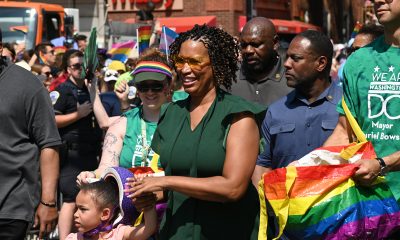
 District of Columbia5 days ago
District of Columbia5 days agoFinal push to raise funds, fill D.C. hotels as WorldPride nears
-

 El Salvador3 days ago
El Salvador3 days agoGay Venezuelan makeup artist remains in El Salvador mega prison
-

 District of Columbia4 days ago
District of Columbia4 days agoReenactment of 1965 gay rights protest at White House set for April 17
-
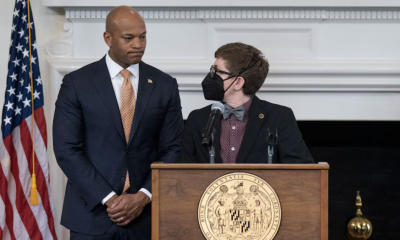
 Maryland5 days ago
Maryland5 days agoFreeState Justice: Transgender activist ‘hijacked’ Moore’s Transgender Day of Visibility event

